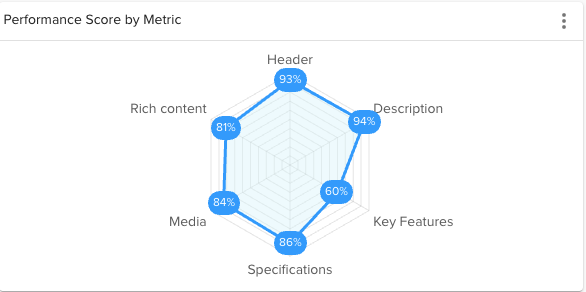Do you work at an eCommerce brand and are looking for ways to keep your product page content compliant across all eCommerce sellers?
Keeping up with frequent product updates is complex and time-consuming. It requires coordinated efforts between stakeholders and constant tracking of any changes that are made. To help manage content compliance throughout the life cycle of a product page, we’ve outlined some strategies and tips that can make it easier to stay on top of things!
Read on to learn more about how to track product page content compliance today.
Understand the Importance of Product Page Content Compliance
When it comes to online shopping, the product page is often the first point of contact between the consumer and the product. Therefore, it is crucial that the product page content is compliant with the relevant laws, regulations, and perhaps most importantly, your brand guidelines.
Compliance ensures that the consumer is provided with accurate and truthful information about the product, including its features, benefits, and any potential risks on every website where that product is sold. Product page content compliance also helps to prevent false advertising and misleading claims, which can harm both the consumer and the seller.
By ensuring compliance, your brand can build trust with your customers and establish a positive reputation in the marketplace. Therefore, it is essential for you to understand the importance of product page content compliance and work to ensure that your product pages meet the necessary standards and branding.
Implement a system that can automate product page monitoring for content compliance.
Define What Should and Shouldn’t Be Included on Product Pages
As an online shopper, have you ever landed on a product page that left you feeling confused about what exactly you would be receiving if you decided to make the purchase? Clearly defining what should and shouldn’t be included on product pages can make all the difference in providing a positive eCommerce experience for your customers.
It’s essential to include features, benefits, and specifications along with high-quality images and videos to capture your audience’s attention. However, it’s important not to overload your page with too much information or cluttered visuals that can distract and overwhelm the customer.
Ultimately, the goal is to provide a clear and concise representation of what your product has to offer to ensure that customers feel confident in their decision to make a purchase.
Identify Which Regulations Need to Be Considered When Drafting Your Product Pages
As an eCommerce brand, it is crucial to understand the various regulations that must be considered when drafting your product pages. GDPR, for instance, governs how you collect and use customers’ personal data. You must ensure that you have their consent before collecting any personal information, such as email addresses or shipping addresses.
The U.S. Federal Trade Commission also enforces consumer protection laws, which require you to provide accurate information and avoid any false claims about your products. Additionally, there are specific guidelines for how products must be labeled and advertised, such as nutritional information for food or safety warnings for electronic devices. By staying informed of these regulations, you can ensure that your product pages are not brand compliant but also legally compliant.

Establish a System for Tracking and Reviewing Product Page Compliance
Change is inevitable, especially in today’s fast-paced eCommerce world. It is crucial to keep track of any modifications made to brand guidelines or product specifications, and to review these changes regularly to ensure they are in place across all product pages.
This is where a tracking and reviewing system comes in handy, such as Wiser Solutions’ Digital Shelf Intelligence. By implementing a system that can automate product page monitoring for content compliance, you can track these pages easier, make more adjustments as needed, and ensure that your brand is operating at peak efficiency.
But how to get started? It begins with identifying the key stakeholders, determining the scope of the problem, and creating clear guidelines for tracking and reviewing product page compliance. With a little planning and effort, you can ensure that any modifications made to your products are not only well-documented but also carefully enacted online to drive the most sales.
Utilize Software Tools to Automate the Process of Monitoring Product Page Content
As the world becomes increasingly digital, brands need to streamline their processes to keep up with the pace of the internet. One area where automation can make a huge difference is in monitoring product page content.
By utilizing software tools like Wiser, businesses can save time and money by automating the process of checking product pages for accuracy and consistency. For example, imagine if a clothing retailer had to manually check each and every product description for errors or changes. It would be a tedious and time-consuming task.
However, with the right software, this process can be done quickly and efficiently, freeing up time to focus on other areas of the business. The benefits of automation are clear and should not be overlooked in the digital age.

Create a Clear System for Updating and Revising Product Page Information as Needed
Keeping product pages up-to-date and accurate is crucial to maintaining a successful online business. However, it can be challenging to keep track of all the changes that need to be made over time. That’s why having a clear and efficient system for updating and revising product page information is critical.
One key aspect of this system is having a centralized database or spreadsheet where all product information is stored. This can include product descriptions, images, pricing, and inventory levels. It’s also important to establish a protocol for who can make changes and how those changes are approved and implemented.
With a well-planned system in place, businesses can ensure their customers are receiving the most accurate and up-to-date information possible, leading to increased trust and customer satisfaction.
By taking the time to ensure product page compliance, businesses can reduce their risk of getting in trouble with regulators and maintain a consistent eCommerce brand. While it requires extra effort and planning, following regulations and keeping track of brand guidelines is ultimately worth it to protect both businesses and customers.
From creating a system for tracking changes to utilizing automation tools, there are plenty of steps that brands can take when it comes to monitoring product page content. With the right framework in place, you can be better prepared to make sure your product pages are always up-to-date and in compliance. Ultimately, by tackling this issue head-on, you’ll save yourself the time and money associated with messy problems down the line.














